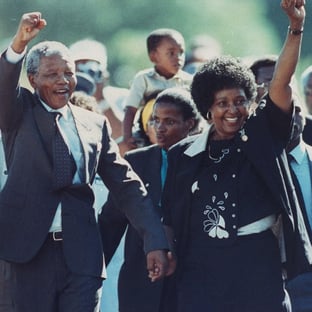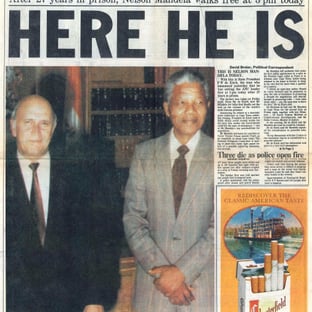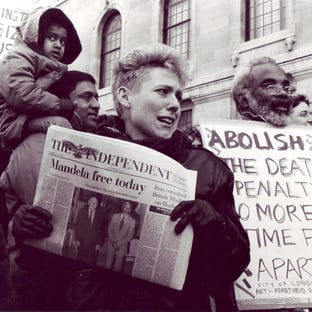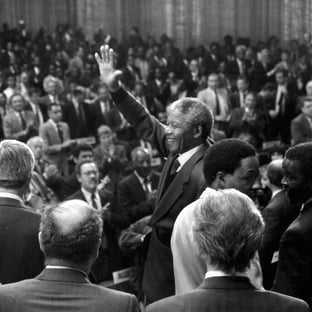Nelson Mandela Released (1990): A New Dawn for South Africa
After 27 years in prison – A pivotal moment in South Africa’s transition from apartheid to democracy.
GOAT NEWS
Hindvarta Desk
6/10/20252 min read
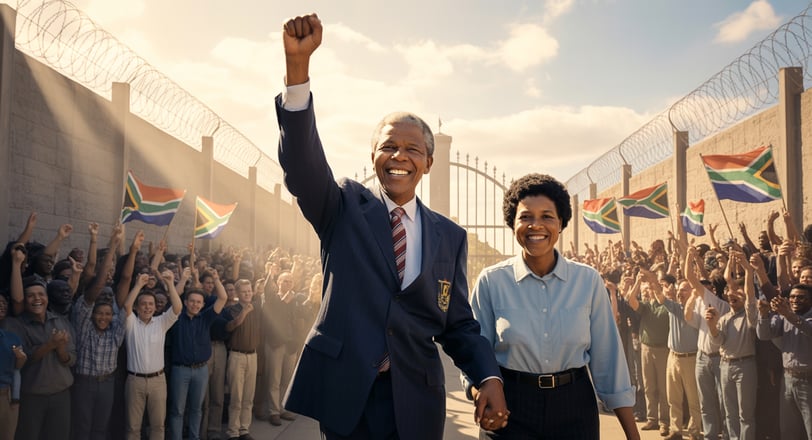

“There is no easy walk to freedom anywhere.” – Nelson Mandela
On February 11, 1990, the world watched with bated breath as a tall, dignified man walked out of Victor Verster Prison, raising his fist in a symbol of triumph and defiance. That man was Nelson Rolihlahla Mandela, and his release after 27 years of imprisonment marked not just a turning point in South African history, but a landmark moment in the global fight against racism, colonialism, and oppression.
The Road to Imprisonment
Nelson Mandela, born in 1918 in the small village of Mvezo, was a key leader of the African National Congress (ANC) and the anti-apartheid movement. Apartheid, the official policy of racial segregation enforced by the South African government, created a brutally unequal society where the Black majority were stripped of basic rights and dignity.
Mandela initially advocated peaceful resistance, but after the Sharpeville Massacre in 1960, where 69 unarmed protesters were killed by police, he co-founded Umkhonto we Sizwe ("Spear of the Nation"), the armed wing of the ANC. In 1962, he was arrested and later sentenced to life imprisonment for sabotage and conspiracy against the state.
The Long Years Behind Bars
Mandela spent 18 of his 27 years in Robben Island Prison, confined to a small cell, forced into hard labor, and allowed only one visitor per year. Yet he never broke. He became a symbol of resistance — a beacon of hope not only for South Africans but for oppressed people around the globe.
Despite brutal conditions, Mandela remained committed to reconciliation, justice, and a peaceful transition to democracy. His moral authority only grew in confinement.
The World Demands His Freedom
Throughout the 1980s, calls for Mandela’s release intensified. Anti-apartheid protests swept across the globe — from universities in the United States to parliaments in Europe. Major musicians like Stevie Wonder and U2 raised awareness. The cry "Free Nelson Mandela" became a rallying anthem of the era.
International sanctions and growing civil unrest inside South Africa made it clear: apartheid could not survive.
February 11, 1990: The Moment That Changed Everything
On a sunny afternoon, Nelson Mandela walked free. At 71, he was greeted by an ecstatic crowd and broadcast to the world. His first public words, spoken with calm strength, were:
“I stand before you not as a prophet, but as a humble servant of you, the people.”
There was no bitterness. No revenge. Only a powerful call for peace and unity.
The Aftermath and Legacy
Mandela led negotiations to dismantle apartheid and usher in a multiracial democracy. In 1994, he was elected as South Africa’s first Black president in the country’s first fully democratic election.
His presidency (1994–1999) focused on reconciliation and rebuilding. He established the Truth and Reconciliation Commission, promoting forgiveness over vengeance.
Today, Nelson Mandela stands as a global icon of peace, dignity, and justice. His release wasn't just the end of his captivity — it was the birth of a new era.
Why It Still Matters
Mandela’s story teaches us the power of resilience, the importance of moral leadership, and the necessity of fighting injustice — even when the odds seem impossible.
His journey from prisoner to president remains one of the greatest stories of triumph in human history.

